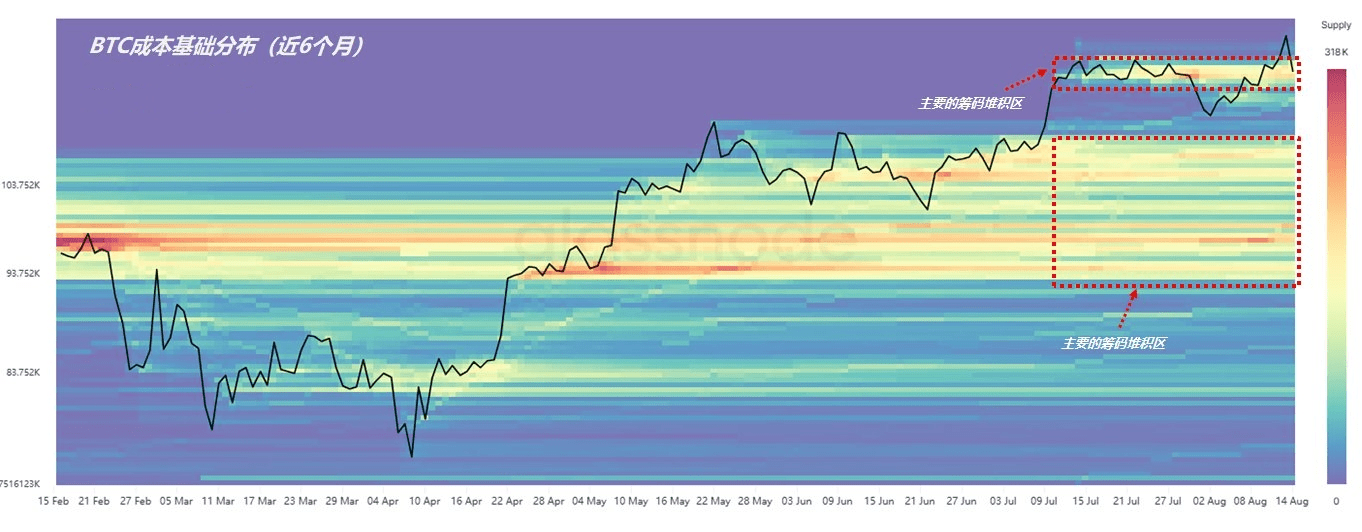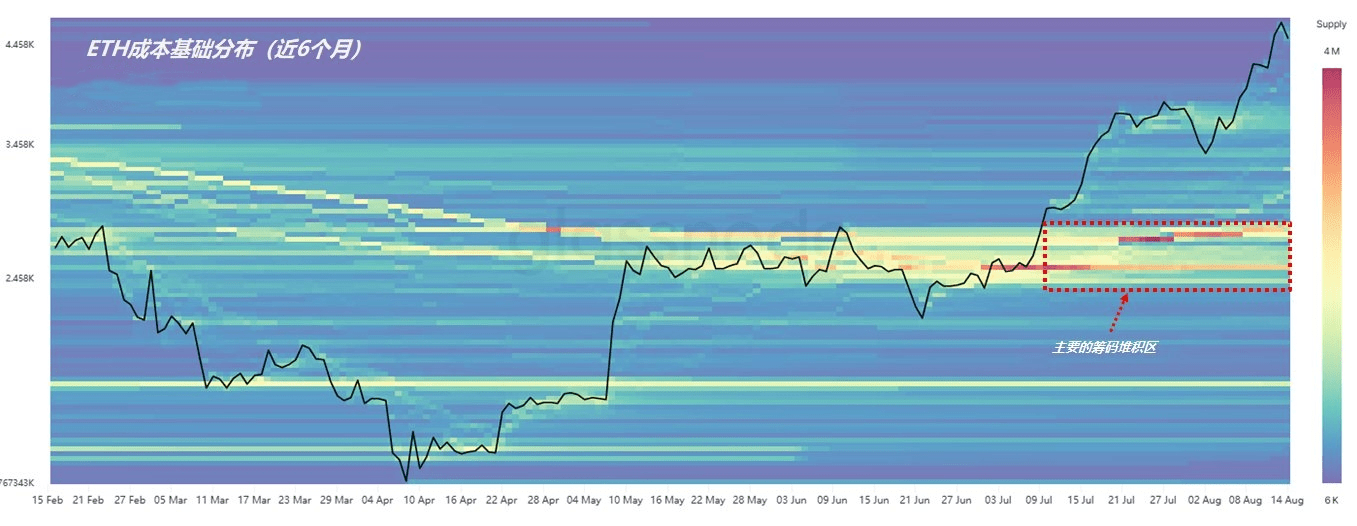In the past six months, Bitcoin's performance in chip cost structure can be described as a textbook case. Regardless of which price range it enters, the market will undergo sufficient turnover, gradually accumulating into a significant chip density area.

(Figure 1)
This steady progress pattern is not about pursuing rapid increases, but about laying a solid foundation for each step of the market. For this reason, these chip accumulations can act like a 'protective wall' during the correction phase, preventing prices from easily breaking down. Thus, it can be seen that Bitcoin's volatility in the future is likely to be smaller than in past cycles.
Although Ethereum has a chip accumulation in the range of $2,500 to $2,800, its thickness is clearly not as strong as Bitcoin's; especially above $2,800, due to the rapid pace of the rise and insufficient turnover, there is a lack of solid chip support at high levels.

(Figure 2)
Therefore, from the perspective of structural stability, Ethereum may have higher volatility. For funds that prefer stability, Bitcoin is more suitable as a core holding, providing more reliable defense in uncertain markets.#比特币